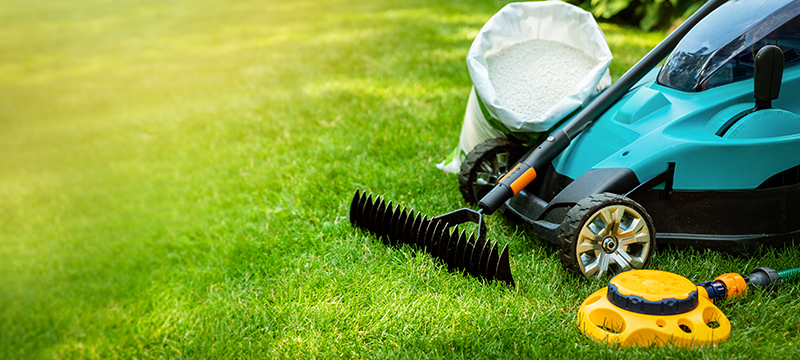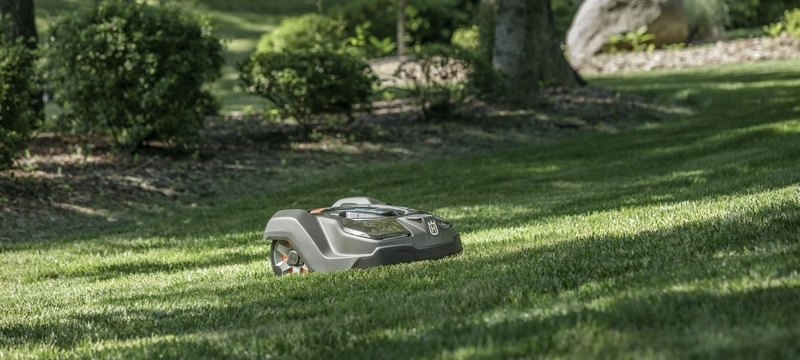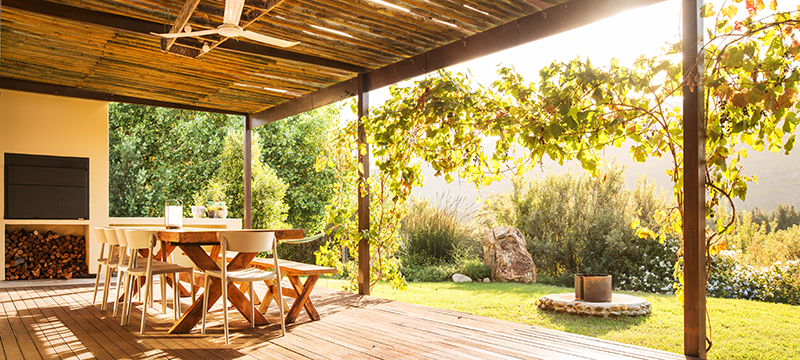If you want that lush, green lawn in mid-summer, it’s better to begin working on it as early as possible. Spring brings warmer temps and melts off any snow, so it’s time to break out the outdoor power equipment and get to work. We’ll cover all the steps to turn your lawn from a yellow patchy turf monster into a glorious yard of the month contender that will have the whole neighborhood talking.
Our step-by-step spring lawn care guide will walk you through the process of preparing your lawn to maximize all of its potential. The many steps in our guide may seem daunting, but the additional work will make all the difference when you’re looking at your beautiful lawn in July.
Lawn Mower Maintenance

Your lawn mower has been sitting inside all winter, waiting for that moment it gets released back into the wild. Get your mower ready for the first mow by tuning it up. It would be best if you had winterized the machine in the fall, but it’s still a good idea to give the equipment another once-over before rolling it out. If you didn’t winterize your mower, follow each of these steps.
- Change oil
- Replace spark plug (Should be replaced each season)
- Check air filter (Replace if needed)
- Sharpen blade (Replace blade if damaged)
- Fill with brand new fuel
Clean and Rake the Yard
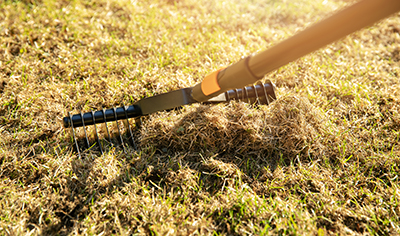
This step is comparable to an artist preparing their canvas before laying down any paint on the way to creating a masterpiece. A lot of potential debris was probably cleared off your lawn in the fall, but another pass over the yard should be done.
- Remove any twigs or leaves
- Clear garbage that blew into your yard
- Use a tine or scarifier rake on the yard to loosen matted grass and get rid of thatch.
Thatch is dead grass, leaves, and roots that live between grass and the soil preventing water, air, and nutrients from reaching lawn roots. Ensure the grass is dry before raking, as you may rip up healthy grass if the soil is too moist.
Aerate The Soil

Lawns can become compacted over time, especially if they see a lot of foot traffic from pets, kids, etc. In order to relieve that compaction, aerate the lawn. Aerating your lawn allows water, air, and fertilizer better access to the roots of the lawn. There are two types of aerators: core aerators and spike aerators. Spike aerators put holes in the lawn but don’t do much in relieving compaction, while core aerators pull plugs of soil from the lawn creating relief for your grass.
- Aerate cool-season grasses in early spring
- Aerate warm-season grasses in late spring
- Clay soils should be aerated more often (at least once a year)
- Typical core aeration should be done every two or three years on a healthy lawn.
Begin Weed Prevention (Optional)
Spring is an excellent time to begin weed prevention before they can even get started. Growing long, thick grass is the best way to smother any potential weed invaders on your lawn, but fight that battle on two fronts. Applying pre-emergent weed control to the lawn prevents weed seeds from germinating.
- This step is optional, depending on the situation you face with your lawn.
- Skip this step if you have bare spots or plan to overseed.
- Pre-emergent herbicides are active for about 12 weeks, so they will prevent grass seed from sprouting.
Fixing Bare Spots or Overseeding
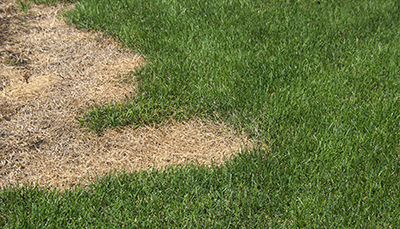
Typically fall is the best time to overseed your lawn and fix bare spots, but that doesn’t mean it can’t be done in the spring; it just takes a little more care. Overseeding helps fill out a thinning lawn making it thicker which will help block out sunlight that allows weeds to thrive.
- Test soil acidity with a pH kit. The optimal range is 5.8 to 7.2 for growing grass.
- Add lime using a spreader if you need to increase the pH level, and sulfur can lower pH levels.
- Test again to ensure the soil has reached the optimal range.
- Cover bare spots with topsoil.
- Use a spreader to apply grass seed. Choose a seed that fits your region.
- Cool-season grasses green earlier in the spring and go dormant later in the fall. They’re best for northern US climates with mild climates and heavier rainfall.
- Warm-season grasses begin to green in late spring and become dormant in mid-fall. They work best for southern US climates where summers are hot and get less moisture.
Fertilize the Lawn

Fertilizing your lawn provides much need nutrients to the grass, such as nitrogen, phosphorus, and potassium, which will lead to a healthier, greener-looking lawn. The first application should be done about three weeks after your lawn begins to green. Don’t apply fertilizer too early, or you could end up feeding weeds.
- Water the lawn before application. Don’t fertilize your lawn if rain is in the forecast within the next 48 hours.
- Use a spreader, so the fertilizer is applied evenly across the lawn. The spreader has a dial that can be set in correspondence with the packaging to ensure you don’t overfertilize.
- Walk in straight lines overlapping slightly during application.
- Use a fertilizer that is best applicable to your lawn situation. There are several varieties that feature additives that can tackle specific weed problems.
- Check the NPK value of the fertilizer to find one that best suits the results of the soil test you performed earlier.
Water the Lawn
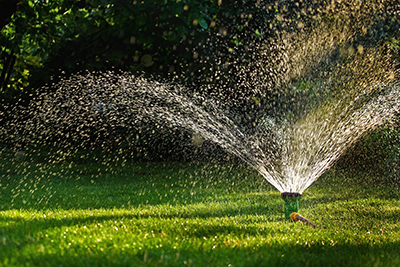
This one is obvious enough, but you don’t want to stumble right before the finish line. There are a handful of rules to follow to ensure all the previous steps come to fruition.
- Lawns need about 1 inch of water per week, depending on grass type. Cool-season grasses should get about 20% more water.
- Use either a sprinkler or garden hose to water new grass needs to be watered twice daily, early in the morning and mid-day. A week after grass begins to show, reduce to one water per day.
- For established lawns, focus on watering deeply but infrequently.
- Water your lawn early in the morning to ensure heat isn’t stealing that valuable moisture and to prevent fungal growth.
Once you have your lawn set up for spring the work isn’t done though. Take a look at our summer lawn care guide to ensure you keep your lawn looking green and prepare it for fall. Other than your grass there are other parts of your yard that need spring upkeep, as well. Our spring yard cleanup guide will help you have your entire yard looking beautiful for summer.

